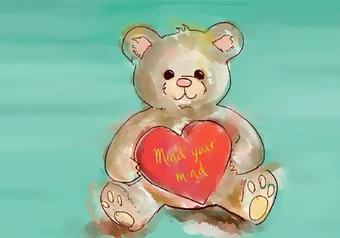The other day, I was on my way home from work when I had a panic attack on the bus. To be fair, it was raining outside, I was sleep deprived and stressed out about meeting an important deadline.
For me, the signs of an oncoming panic attack include shortness of breath, increased heart rate and racing thoughts. Sitting on the bus, my body slowly started feeling numb and my muscles tensed up. I began feeling dizzy as obsessive thoughts and worries took over my mind. I started biting my nails in an attempt to distract myself.
The unfortunate thing about having an panic attack on the bus is that you have nowhere to run. My social anxiety prevented me from hyperventilating in front of everybody. Instead, I sat there — frozen like I was about to faint.
So, how did I cope? Usually I deal with panic attacks using self-soothing or distraction strategies like going for a walk outside. In this instance, I didn’t have many resources at my disposal, so I had to use internal coping strategies rather than external ones. My goal today is to share the skills I used that helped reduce my anxiety.
Paced breathing
As I started to panic, the first thing I told myself was, “Just breathe.” Of course, if you’ve ever had a panic attack, you know how difficult that can be, especially if in the moment; you are sweating, having chills or feeling dizzy. I usually hate breathing exercises, partly because I’m an impatient person who wants to feel better now. The one advantage with paced breathing, however, is that you can do it anytime, anywhere. What works for me might not work for you, but usually, I do paced breathing using counts of four. Inhale four times, holding my breath for four seconds each time and exhaling for four seconds.
One thing that’s important to note is that for paced breathing to work, you have to give it a few minutes. More than once, I’ve tried paced breathing and given up after about 10 seconds. Calm breathing is a skill like every other, and a difficult one to grasp at that.
Mindfulness
The second skill that helped me was being mindful of my thoughts and surroundings. Since my panic attacks are often associated with obsessive, racing and intrusive thoughts, I find it beneficial to observe and describe my thoughts without judging them, suppressing them or acting on them. One of my favourite tricks is to label my thoughts and remember that they are just thoughts, nothing else. After all, thoughts are just a combination of the 26 letters of the English alphabet and they don’t have to control your behaviours.
Sometimes I will practice mindfulness by changing the tone of voice inside my head. For instance, I will take negative or self-hating thoughts, then restate them using a different voice, like a cartoon character or celebrity. It seems silly at first, but admittedly, I’ve cracked myself up doing this more than once. Can you imagine saying, “Oh my god, what am I going to wear to my job interview in two months?" in a high-pitched voice? Or, can you imagine singing your worries away? Thoughts are not reality, and they don’t necessarily tell the truth, either.
The good news? Having an panic attack on the bus turned out to be an opportunity to practice some healthy coping skills. As soon as I got home, I put on some soothing tunes and slept, as my body felt exhausted from the surge of adrenaline. I’m sure that I will have to face many more panic attacks on public transit in the near future, but I’m also a bit more confident in my ability to cope with them.
The authors of this column are not mental health professionals. If you need additional support, please contact Student Health Services, Sexual Assault Support Centre and/or the Wellness Centre. In case of an emergency, call 911.
First online
Share this article



